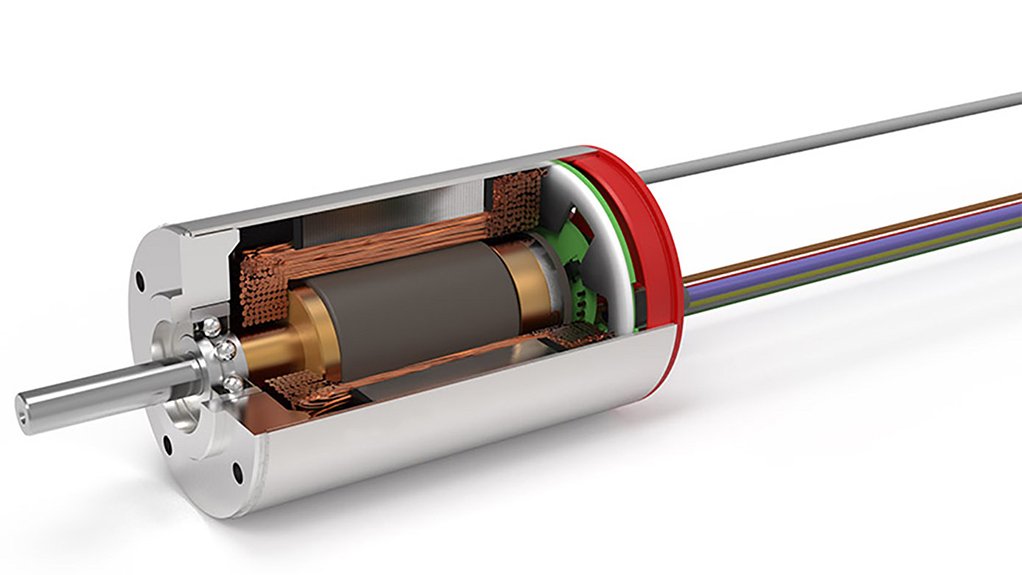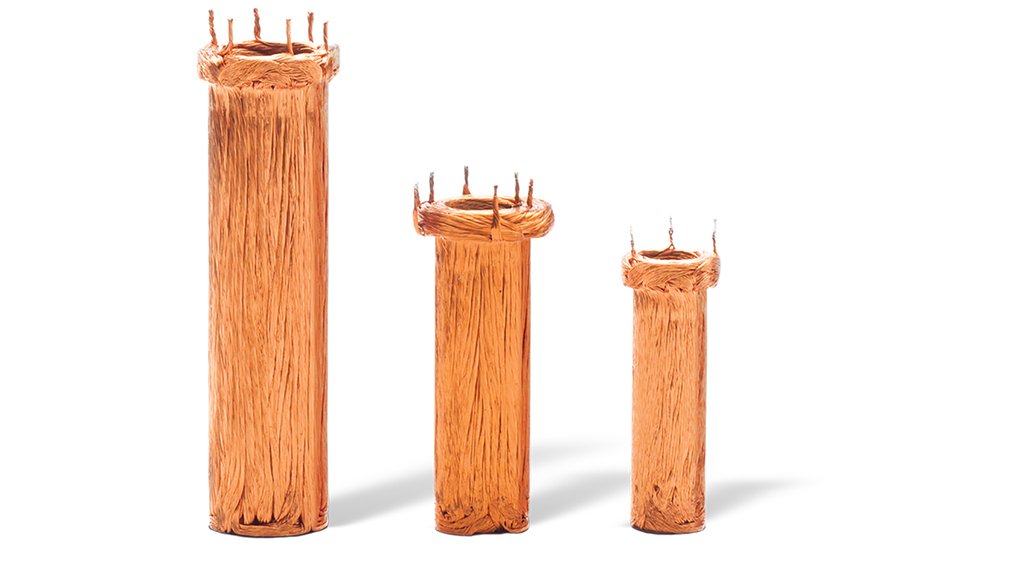Design consideration critical for efficiency of power tools



COIL TECHNOLOGY The Ultra EC family of brushless slotless motors employs a revolutionary and patented U coil technology
MORE POWER Ultra EC brushless slotless motors contains a winding that is parallel to the motor axis so perpendicular magnetic forces are minimised, reducing coper losses and enabling the motor to develop more power
With choosing the right motor for an industrial power tool being no trivial task, designers must consider the unique operating profile of the tool as well as operating life, product weight, user comfort and energy efficiency, particularly if the tool is to be battery operated, says motion applications solutions provider Portescap business development manager Thomas Baile.
He examines the performance requirements of power tool applications and how the latest advances in motor technology for these tasks are helping to address typical design compromises.
“There are often conflicting operational requirements in product design. The industrial power tool is a typical example, with an operating profile that is quite different from other motor-driven applications. Whether the specific tool is fastening, gripping or cutting, there is a specific motion profile that is split into two phases.”
Baile points out, first, there is the speed phase, where there is little resistance – perhaps as bolts thread in or as the jaws of a cutting or gripping tool approach the workpiece. During this phase, a motor that operates at a faster free-run speed reduces cycle time and boosts productivity.
Secondly, in the torque phase, as the toolperforms the more forceful work of tightening, cutting or gripping, the need for torque becomes paramount. A motor that delivers high peak torque can perform a wider range of tough jobs without excessive heating.
Baile notes that these alternating speed and torque cycles must be constantly repeated in demanding industrial applications. The different speed, torque and duration characteristics complicate the motor selection process, calling for a design that minimises losses to achieve the best solution possible.
However, this is even more critical for battery operated tools, where only limited power is available, yet where the design engineer wants to be able to achieve the maximum number of operations from a single charge, says Baile.
“Given these conflicting requirements, it might seem that there is no ideal solution. The electrical performance of a motor is defined by the magnetic circuit, so every option requires a compromise.”
He explains that the first component within the circuit, the magnet, has a fixed value. However, the second component, the copper winding, can be easily modified by changing both the wire diameter and the number of turns, the torque constant (Kt) and resistance can be fine-tuned.
In the speed phase of the industrial power tool’s operation profile, the motor needs to run fast with little resistance. Here, a lower Kt value gives increased speed.
During the torque phase, however, the motor is expected to deliver peak torque at low speeds. A higher Kt value gives a higher output torque at a given current.
“We might think to select a low Kt value to increase speed, and compensate the low Kt with more current to reach higher output torque. However, a higher current would increase the copper losses, generating heat and therefore limiting the maximum torque available.”
Excess heat impacts on the comfort of the user, while the increased current impacts on battery life.
There are also iron losses to consider, which are related to speed, says Baile. Eddy current losses increase with the square of speed, heating up the motors simply when rotating – even in a no-load condition.
“There is no unique solution, and in the past design engineers would have had to accept the performance compromise in the different phases of operation and in the broader used requirements for the tool.”
However, Portescap has developed a new range of brushless slotless motors optimised for use in power tools that go a long way to minimising the traditional design compromise.
Brushless motors have inherent advantages over brushed motors in power tool designs. Brushless motors are less susceptible to mechanical wear (no brush friction), can be operated at much higher speeds (shortening cycle time and increasing productivity) and can sustain high peak current (no brushes) – for example, during the tightening phase of a fastening tool’s operation – providing far greater life in the hand tool.
In terms of power density, a brushless slotless motor is a better option than slotted, providing superior ability to maintain speed under load. Further, while the slotted motor can handle higher temperatures to allow for more torque generation, this is not of direct benefit to industrial power tool applications.
Heat is ‘the enemy’ in the industrial power tool, which are mostly hand-held, leading to the battery being drained more quickly and reducing user comfort and safety.
The latest development from Portescap represents a significant evolution of the brushless slotless motor, specifically for industrial power tool applications, he points out.
The new ultra-electronically commutated family of brushless slotless motors employs a revolutionary and patented U-coil technology. These miniature motors contain a winding that is parallel to the motor axis, unlike the skewed arrangement of a conventional slotless motor, perpendicular magnetic forces are minimised, reducing copper losses and enabling the motor to develop more power.
“This revolutionary new design optimises speed and torque in a compact package for the most challenging applications.”
With these new products, Portescap has gone a long way to eliminating the compromises design engineers have traditionally faced in selecting motors for industrial power tools, concludes Baile.
Comments
Press Office
Announcements
What's On
Subscribe to improve your user experience...
Option 1 (equivalent of R125 a month):
Receive a weekly copy of Creamer Media's Engineering News & Mining Weekly magazine
(print copy for those in South Africa and e-magazine for those outside of South Africa)
Receive daily email newsletters
Access to full search results
Access archive of magazine back copies
Access to Projects in Progress
Access to ONE Research Report of your choice in PDF format
Option 2 (equivalent of R375 a month):
All benefits from Option 1
PLUS
Access to Creamer Media's Research Channel Africa for ALL Research Reports, in PDF format, on various industrial and mining sectors
including Electricity; Water; Energy Transition; Hydrogen; Roads, Rail and Ports; Coal; Gold; Platinum; Battery Metals; etc.
Already a subscriber?
Forgotten your password?
Receive weekly copy of Creamer Media's Engineering News & Mining Weekly magazine (print copy for those in South Africa and e-magazine for those outside of South Africa)
➕
Recieve daily email newsletters
➕
Access to full search results
➕
Access archive of magazine back copies
➕
Access to Projects in Progress
➕
Access to ONE Research Report of your choice in PDF format
RESEARCH CHANNEL AFRICA
R4500 (equivalent of R375 a month)
SUBSCRIBEAll benefits from Option 1
➕
Access to Creamer Media's Research Channel Africa for ALL Research Reports on various industrial and mining sectors, in PDF format, including on:
Electricity
➕
Water
➕
Energy Transition
➕
Hydrogen
➕
Roads, Rail and Ports
➕
Coal
➕
Gold
➕
Platinum
➕
Battery Metals
➕
etc.
Receive all benefits from Option 1 or Option 2 delivered to numerous people at your company
➕
Multiple User names and Passwords for simultaneous log-ins
➕
Intranet integration access to all in your organisation




















